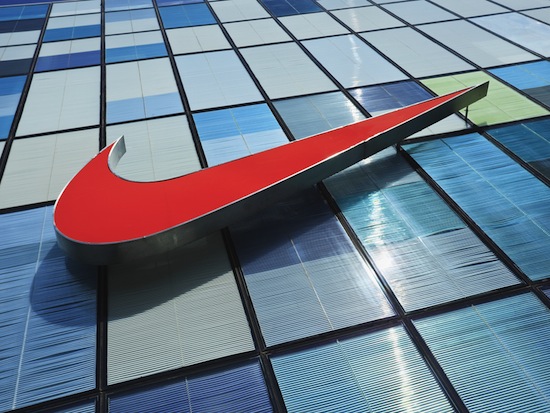Nike moves faster to clean up its supply chain

Nikehas joined an innovative partnership that can more quickly clean up its supply chain by giving the company easy access to sustainable materials and chemicals.
Through Switzerland-basedBluesign Technologies-- which has created a tool for improving supply chains in the textile industry -- Nike's suppliers will have access to online tools that help them find the most sustainable materials available.
Nike is the world's largest sportswear brand and its supply chain spans 50 countries, 800 contract factories and hundreds of textile manufacturers that supply them. And in 2011 Nike announced it would eliminate all releases of hazardous chemicals across its global supply chain by 2020.
Using the "bluefinder" tool, a supplier can access pre-screened and more sustainable textile preparations -- including dye systems, detergents and other process chemicals used in the manufacturing process. It enables suppliers to effectively manage restricted substances and provides the opportunity to increase water and energy efficiency.
Another tool, "blueguide," gives Nike access to 30,000-plus materials that have been produced using these sustainable chemicals.
Before this, Nike had to go through the iterative process of assessing individual factories and suppliers, which obviously takes many years and lots of investment and time.
Since 2001, when Nike introduced a Restricted Substances List, which bars toxic materials from its products, it's been trying to push that through its supply chain.
"Nike is committed to catalyzing a major change in the world of materials, driving for the elimination of hazardous substances and innovating new, sustainable materials," said Hannah Jones, vice president of sustainable business and innovation for Nike, in a statement. "To shift to a palette of entirely sustainable materials multiple stakeholders must work together to innovate new chemistry, encourage the use and scale of better chemistry, and eliminate harmful chemistry."
Based on Nike's analysis, the company has found that 60 percent of the environmental impact from a pair of shoes comes from the materials used.
"Nike was persistent with us in working to find a scalable solution for a supply chain as large as theirs," said Peter Waeber, CEO of Bluesign Technologies, in a statement. "With the rollout of a positive list of textile chemicals for its broad supplier base, Nike can support its supply chain to improve chemical sourcing and deliver positive environmental and consumer safety benefits."
On top of recent development, Nike developed theEnvironmental Apparel Design Toolto evaluate all of the waste, energy, toxics and water involved in textile manufacturing. It was used as a basis for the Sustainable Apparel Coalition'sHigg Index, which helps clothing and shoe retailers assess the environmental impact of brands they sell.
Photo of theNike swoosh outside a Nike storeprovided byTonyV3112via Shutterstock.
This storyis reprinted with permission fromSustainable Business.




